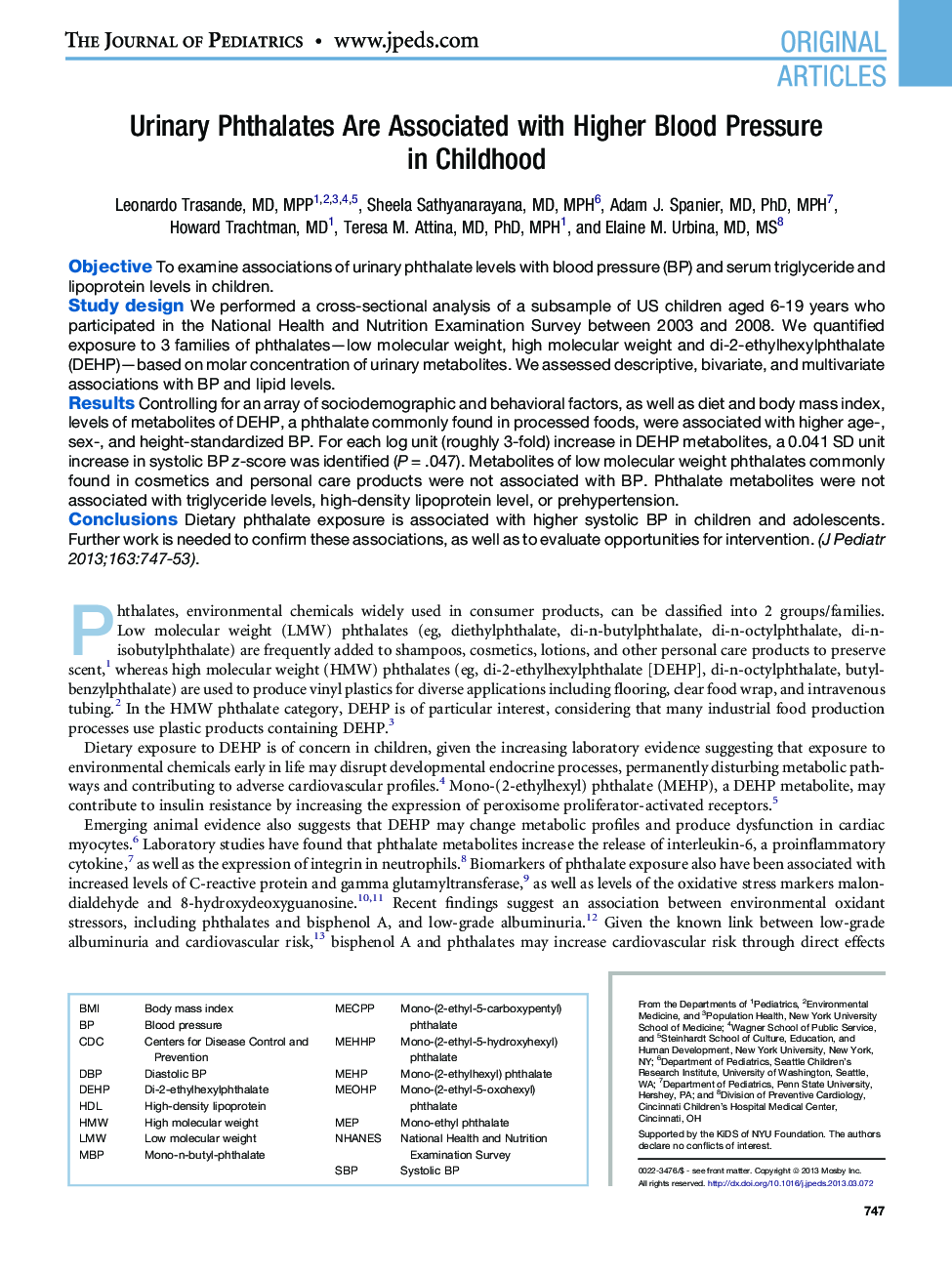| Article ID | Journal | Published Year | Pages | File Type |
|---|---|---|---|---|
| 6222730 | The Journal of Pediatrics | 2013 | 8 Pages |
ObjectiveTo examine associations of urinary phthalate levels with blood pressure (BP) and serum triglyceride and lipoprotein levels in children.Study designWe performed a cross-sectional analysis of a subsample of US children aged 6-19 years who participated in the National Health and Nutrition Examination Survey between 2003 and 2008. We quantified exposure to 3 families of phthalates-low molecular weight, high molecular weight and di-2-ethylhexylphthalate (DEHP)-based on molar concentration of urinary metabolites. We assessed descriptive, bivariate, and multivariate associations with BP and lipid levels.ResultsControlling for an array of sociodemographic and behavioral factors, as well as diet and body mass index, levels of metabolites of DEHP, a phthalate commonly found in processed foods, were associated with higher age-, sex-, and height-standardized BP. For each log unit (roughly 3-fold) increase in DEHP metabolites, a 0.041 SD unit increase in systolic BP z-score was identified (P = .047). Metabolites of low molecular weight phthalates commonly found in cosmetics and personal care products were not associated with BP. Phthalate metabolites were not associated with triglyceride levels, high-density lipoprotein level, or prehypertension.ConclusionsDietary phthalate exposure is associated with higher systolic BP in children and adolescents. Further work is needed to confirm these associations, as well as to evaluate opportunities for intervention.
